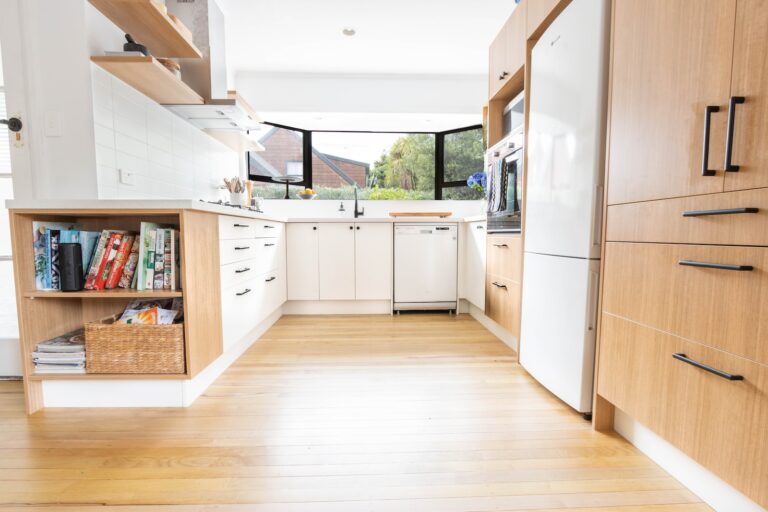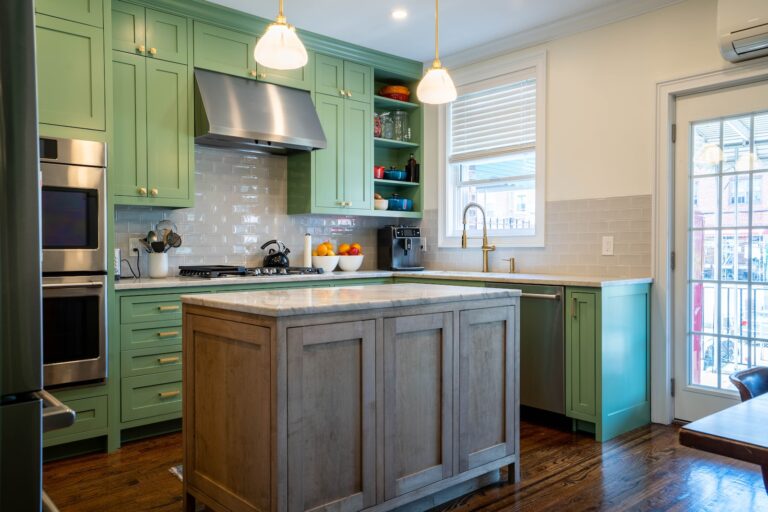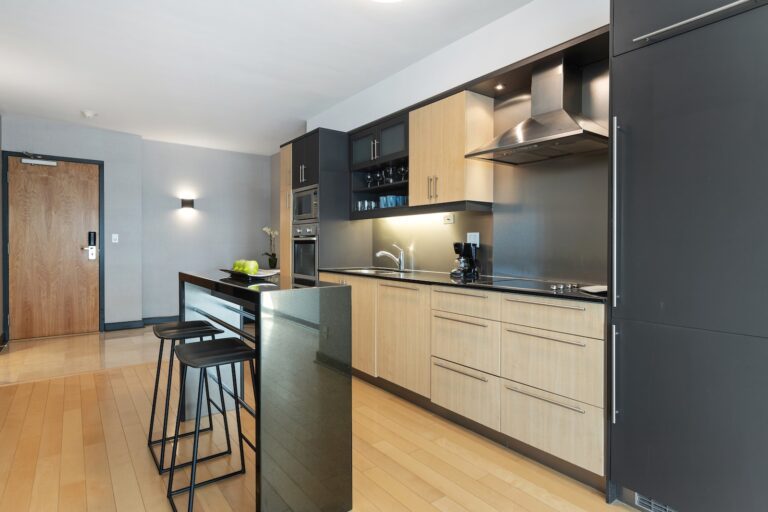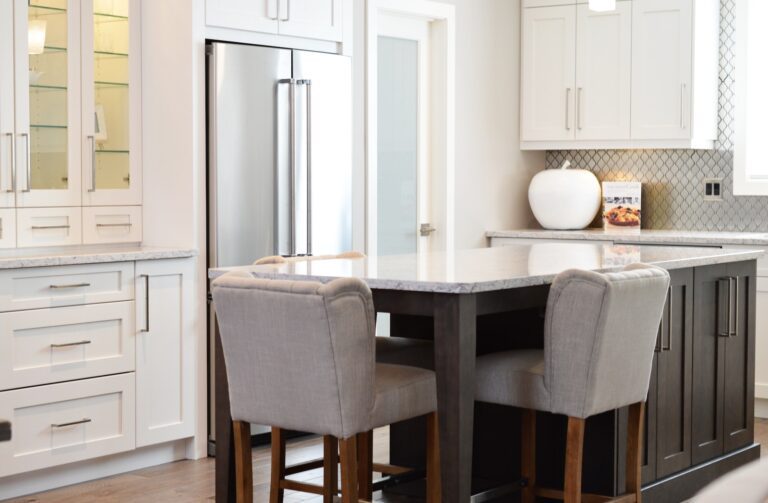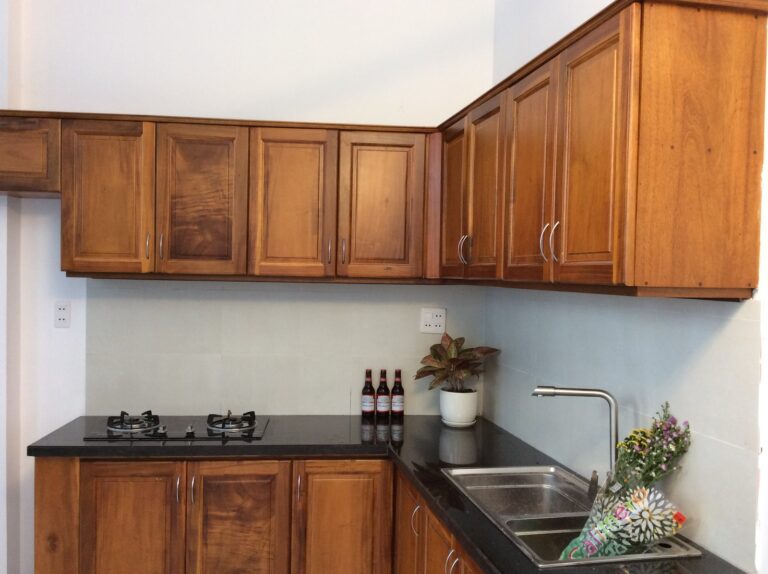Which Wood Is Good For Kitchen Cabinets?
Your choice of wood for kitchen cabinets can make a big impact on the overall look and feel of your kitchen. With so many options available, it can be overwhelming to decide which type of wood is best suited for your kitchen. But don’t worry, we’ve got you covered!
In this article, we will explore the different types of woods used for kitchen cabinets and their unique characteristics. We’ll also discuss the pros and cons of each wood type, helping you make an informed decision when it comes to choosing the perfect wood for your kitchen cabinets. So let’s dive in and discover which wood is good for kitchen cabinets!
Which Wood Is Good for Kitchen Cabinets?
Choosing the right wood for your kitchen cabinets is crucial for both functionality and aesthetics. Different types of wood have varying durability, hardness, and appearance, which can affect the lifespan and overall look of your cabinets. Here are some of the best wood types for kitchen cabinets:
1. Hard Maple
Hard maple is a popular choice for kitchen cabinets because of its durability and hardness. It is resistant to scratches and dents, making it ideal for high-traffic areas like the kitchen. Hard maple has a light color with subtle grain patterns, making it easy to complement different kitchen styles. Additionally, hard maple is a cost-effective option compared to other hardwoods such as oak and cherry.
One downside to hard maple is its tendency to yellow over time, which can affect its appearance. However, this can be prevented by applying a clear finish to protect the wood from sunlight and other elements.
2. Cherry
Cherry wood is another popular choice for kitchen cabinets due to its rich, warm color and fine grain patterns. It is a moderately hard wood that is easy to work with, making it a good option for intricate cabinet designs. Cherry wood also has natural resistance to moisture, making it less likely to warp or crack in humid environments.
One downside to cherry wood is its susceptibility to scratches and dents, which can be noticeable on its smooth surface. However, a protective finish can help prevent damage and maintain the wood’s appearance.
3. Oak
Oak wood is a durable and affordable option for kitchen cabinets. It is a hard wood that has a distinctive grain pattern, which can add character and texture to your cabinets. Oak wood also has natural resistance to moisture and pests, making it a practical choice for kitchens.
One downside to oak wood is its tendency to yellow over time, especially when exposed to sunlight. However, this can be prevented by applying a protective finish and keeping the cabinets away from direct sunlight.
4. Hickory
Hickory wood is a strong and durable option for kitchen cabinets. It has a distinctive grain pattern with variations in color, which can add visual interest to your cabinets. Hickory wood is also resistant to dents and scratches, making it ideal for busy kitchens.
One downside to hickory wood is its hardness, which can make it more difficult to work with and require specialized tools. Additionally, hickory wood can be more expensive than other hardwoods.
5. Walnut
Walnut wood is a luxurious option for kitchen cabinets, with its rich, dark color and fine grain patterns. It is a moderately hard wood that is easy to work with, making it a good option for intricate cabinet designs. Walnut wood also has natural resistance to moisture and pests, making it a practical choice for kitchens.
One downside to walnut wood is its cost, which can be higher than other hardwoods. Additionally, walnut wood can be more susceptible to scratches and dents, which can be noticeable on its smooth surface.
6. Alder
Alder wood is a softer hardwood that is easy to work with, making it a good option for custom cabinet designs. It has a light color with subtle grain patterns, which can complement different kitchen styles. Alder wood is also resistant to moisture and pests, making it a practical choice for kitchens.
One downside to alder wood is its susceptibility to scratches and dents, which can be noticeable on its smooth surface. However, a protective finish can help prevent damage and maintain the wood’s appearance.
7. Pine
Pine wood is a softwood that is affordable and easy to work with. It has a light color with distinctive knots and grain patterns, which can add rustic charm to your cabinets. Pine wood is also resistant to moisture and pests, making it a practical choice for kitchens.
One downside to pine wood is its softness, which can make it more susceptible to scratches and dents. However, a protective finish can help prevent damage and maintain the wood’s appearance.
8. Birch
Birch wood is a moderately hard wood that is affordable and easy to work with. It has a light color with subtle grain patterns, making it a versatile option for different kitchen styles. Birch wood is also resistant to moisture and pests, making it a practical choice for kitchens.
One downside to birch wood is its susceptibility to yellow over time, especially when exposed to sunlight. However, this can be prevented by applying a protective finish and keeping the cabinets away from direct sunlight.
9. Ash
Ash wood is a hard wood that is durable and easy to work with. It has a light color with distinctive grain patterns, which can add visual interest to your cabinets. Ash wood is also resistant to moisture and pests, making it a practical choice for kitchens.
One downside to ash wood is its susceptibility to scratches and dents, which can be noticeable on its smooth surface. However, a protective finish can help prevent damage and maintain the wood’s appearance.
10. Mahogany
Mahogany wood is a luxurious option for kitchen cabinets, with its rich, dark color and fine grain patterns. It is a hard wood that is easy to work with, making it a good option for intricate cabinet designs. Mahogany wood also has natural resistance to moisture and pests, making it a practical choice for kitchens.
One downside to mahogany wood is its cost, which can be higher than other hardwoods. Additionally, mahogany wood can be more susceptible to scratches and dents, which can be noticeable on its smooth surface.
Benefits of Choosing the Right Wood for Kitchen Cabinets
Choosing the right wood for your kitchen cabinets can have several benefits, including:
- Increased durability and longevity
- Enhanced aesthetics and visual appeal
- Better functionality and ease of use
- Improved resistance to moisture and pests
- More customization and personalization options
Conclusion
In conclusion, choosing the right wood for your kitchen cabinets is an important decision that can affect the overall look and functionality of your kitchen. Consider the durability, hardness, and appearance of different wood types when making your decision, and don’t forget to factor in your budget and personal preferences. With the right wood and proper maintenance, your kitchen cabinets can last for years to come.
Frequently Asked Questions
What are some popular wood options for kitchen cabinets?
Some popular wood options for kitchen cabinets include maple, cherry, oak, birch, and hickory. Each type of wood has different characteristics and can be stained or painted to match your kitchen’s decor.
Maple is a durable and versatile wood that is often used for contemporary or traditional kitchen designs. Cherry is a luxurious and elegant option that is known for its rich, warm tones. Oak is a classic and affordable choice that can add warmth and texture to your kitchen. Birch is a light-colored wood that is popular for modern and minimalist-style kitchens. Hickory is a strong and durable wood that is often used for rustic or country-style kitchens.
What should I consider when choosing wood for my kitchen cabinets?
When choosing wood for your kitchen cabinets, consider durability, style, and cost. Some woods are more durable than others and will hold up better to daily wear and tear. You should also consider the style of your kitchen and choose a wood that complements the overall design. Additionally, the cost of the wood can vary greatly, so consider your budget when making your selection.
You may also want to consider the type of finish you want for your cabinets. Some woods are better suited for staining, while others are better for painting. Make sure to choose a wood that will work well with the finish you have in mind.
What is the difference between solid wood and engineered wood cabinets?
Solid wood cabinets are made entirely from natural wood and are often more expensive than engineered wood cabinets. They are also more durable and can be sanded and refinished if they become scratched or damaged. Engineered wood cabinets, on the other hand, are made from a combination of wood fibers and resins that are pressed together. They are often less expensive than solid wood cabinets and can be more resistant to warping and moisture damage.
When choosing between solid wood and engineered wood cabinets, consider your budget and the level of durability you need. If you are looking for a high-end, long-lasting option, solid wood may be the way to go. If cost is a concern or you need cabinets that can withstand moisture, engineered wood may be a better choice.
Can kitchen cabinets be made from reclaimed wood?
Yes, kitchen cabinets can be made from reclaimed wood. Reclaimed wood is a sustainable and eco-friendly option that can add character and warmth to your kitchen. However, it’s important to note that reclaimed wood can be more expensive than new wood and may require more maintenance.
When using reclaimed wood for kitchen cabinets, make sure it has been properly treated and sealed to prevent any potential health hazards. You may also want to consider the age and condition of the wood, as older wood may have more wear and tear and require more upkeep.
How can I maintain the look of my wood kitchen cabinets?
To maintain the look of your wood kitchen cabinets, regularly clean them with a mild soap and water solution. Avoid using harsh chemicals or abrasive materials that can scratch or damage the wood. You should also avoid exposing your cabinets to excessive moisture or extreme temperatures, as this can cause warping or cracking.
If your cabinets become scratched or damaged, you may be able to sand and refinish them to restore their appearance. However, this may not be possible with all types of wood and finishes, so consult with a professional if you are unsure.
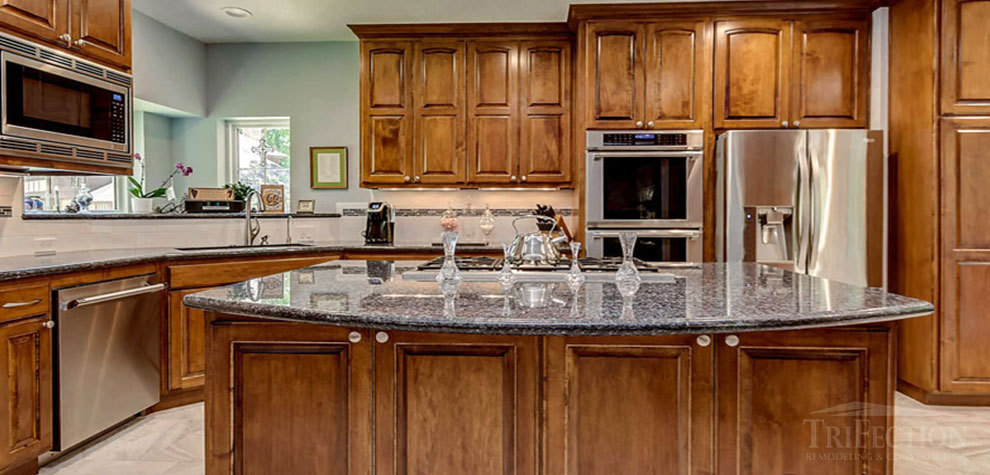
The Best Wood For Making Cabinets | THE HANDYMAN |
In conclusion, when it comes to choosing the best wood for your kitchen cabinets, you have a variety of options to choose from. Each type of wood has its own unique characteristics, so it’s important to consider factors such as durability, appearance, and cost before making a decision.
For those who prioritize durability, hardwoods such as oak, cherry, and maple are excellent options. These woods are known for their strength and resistance to wear and tear, making them ideal for kitchen cabinets that will see frequent use.
On the other hand, if you’re looking for a wood that’s both beautiful and affordable, consider softwoods like pine or spruce. While not as durable as hardwoods, these woods can still provide a stunning finish and are often more budget-friendly.
Ultimately, the best wood for your kitchen cabinets will depend on your personal preferences and needs. By weighing the pros and cons of different woods and considering factors such as durability, appearance, and cost, you can make an informed decision that will ensure your kitchen looks beautiful and functions well for years to come.

